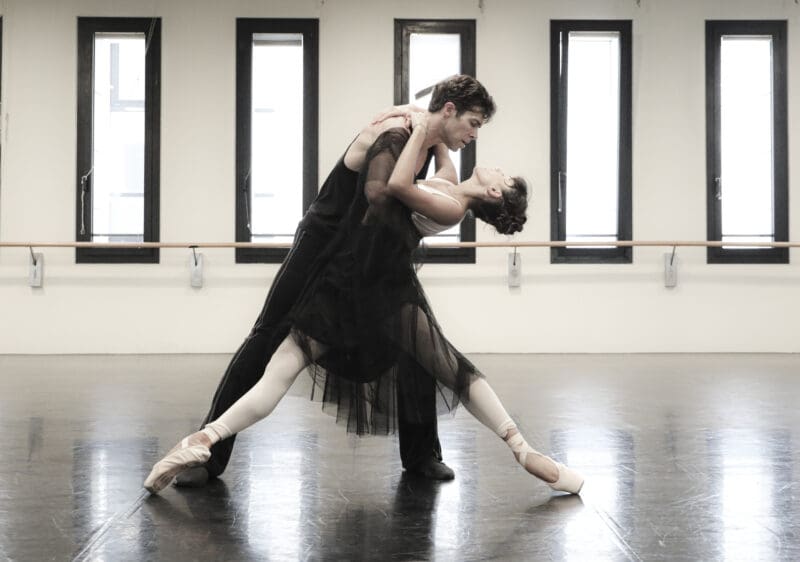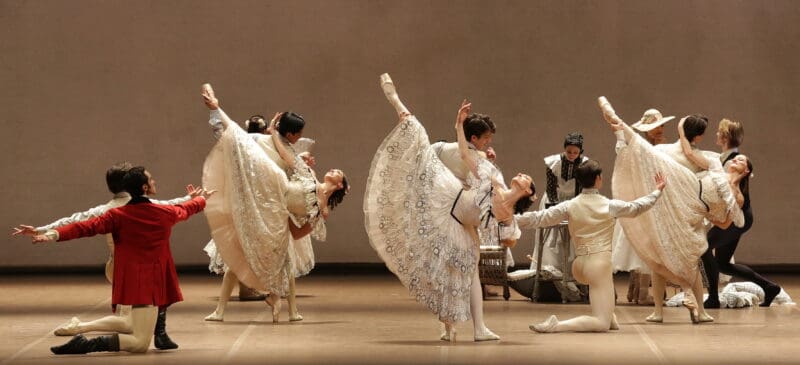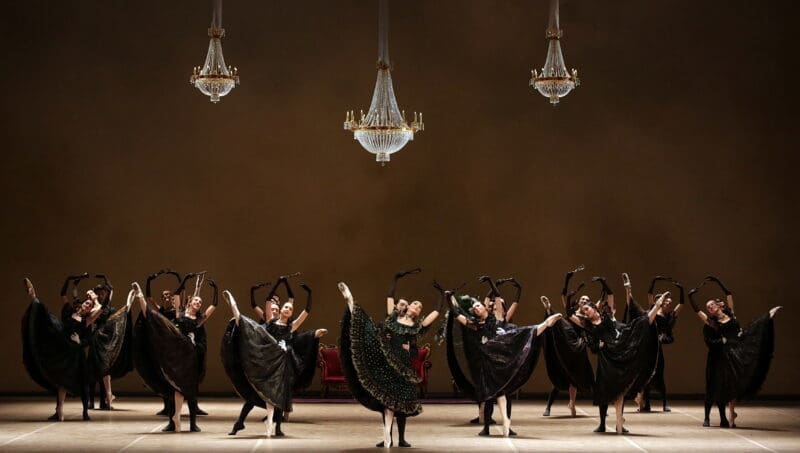The evocative ballet will feature eight performances from 25 September to 16 October 204 with étoiles, guest artists and major debuts for La Scala performers.
A FEW months after the summer pause, the ballet season resumes on September 25, with an undisputed masterpiece, John Neumeier’s La Dame aux camélias. Seven years after previous performances, a title exemplary of Neumeier’s predilection for narrative evening ballets and his conception of contemporary drama, created in 1974 for the Stuttgart Ballet and Marcia Haydée, to whom it is dedicated, returns to La Scala.
Neumeier turned to the novel by Alexandre Dumas’s son, written in 1848, a few months after the death of Marie Duplessis, whose story inspired Verdi’s Violetta in La Traviata. He therefore chose to draw inspiration from the novel and not from the play reworked by the author himself with a set design described as “Visconti-like” and Jürgen Rose’s beautiful and evocative staging.

Nicoletta Manni Roberto Bolle ph Brescia e Amisano ©Teatro alla Scala
Because of its structure, the intensity and refinement of the choreographic writing, this ballet requires a high technical and interpretative depth. First and foremost from the protagonists: in the principal roles of Marguerite Gautier and Armand Duval, for the first time together in this ballet, La Scala’s étoiles, Nicoletta Manni and Roberto Bolle will perform together.
New partnerships for subsequent performances will occur as well, starring Alina Cojocaru with Claudio Coviellonew, and Martina Arduino with Timofej Andrijashenko. The body of music by Fryderyk Chopin, chosen by Neumeier for this production will be performed by Teatro alla Scala Orchestra and conducted by Simon Hewett.

repertorio La Dame aux camélias-.ph Brescia e Amisano ©Teatro alla Scala
The plot begins with Marguerite Gautier dead. The contents of her luxurious apartment are about to be auctioned off. Curious visitors, buyers, acquaintances and friends of the deceased, including old Monsieur Duval, to examine the furnishings. A young man – Armand Duval – desperately bursts into the room and loses his senses. Duval recognises his son and lovingly supports him.

repertorio La Dame aux camélias-.ph Brescia e Amisano ©Teatro alla Scala
Overcome by memories, Armand begins to tell his story. Thus begins John Neumeier’s La Dame aux camélias, immediately strongly affirming the originality and poetic sensibility of the author, one of the greatest living choreographers, an innovator and revitaliser of the genre of dramatic ballet. A
firm believer in the principle that “technique simply becomes the means of getting to the emotions,” Neumeier thus approaches the archetypes of the ballet or literary repertoire with a curiosity that dissects psychological, intimate and sentimental dynamics and goes in search of the truth of the characters and their emotional development.

repertorio La Dame aux camélias-.ph Brescia e Amisano ©Teatro alla Scala (5)
Here then, borrowing techniques cinema, in a montage of sequences between objective and subjective, and through the use of flashback, the fate of Marguerite Gautier is revived through the memory of Armand, the young man whom Marguerite loved but whom she had to give up.
It is duplicated, with a real dramaturgical coup, through the device of the “theatre within theatre” when, attending the ballet Manon Lescaut at their first meeting, Marguerite and Armand identify with the characters of Manon and Des Grieux. Thus continues with the revival of Dame aux camélias the relationship with the great choreographer that will see materialise in the coming season.
by Chidozie Obasi
